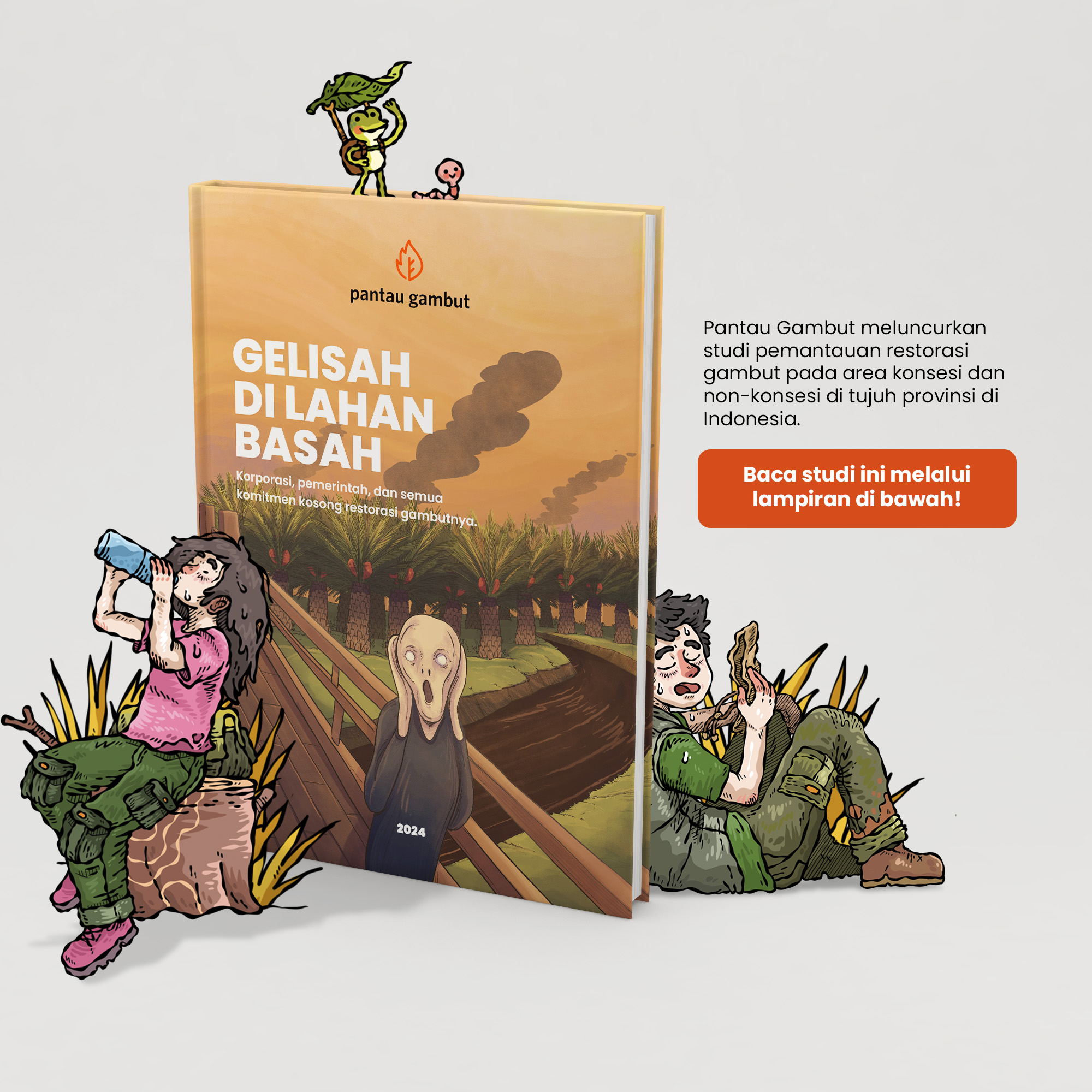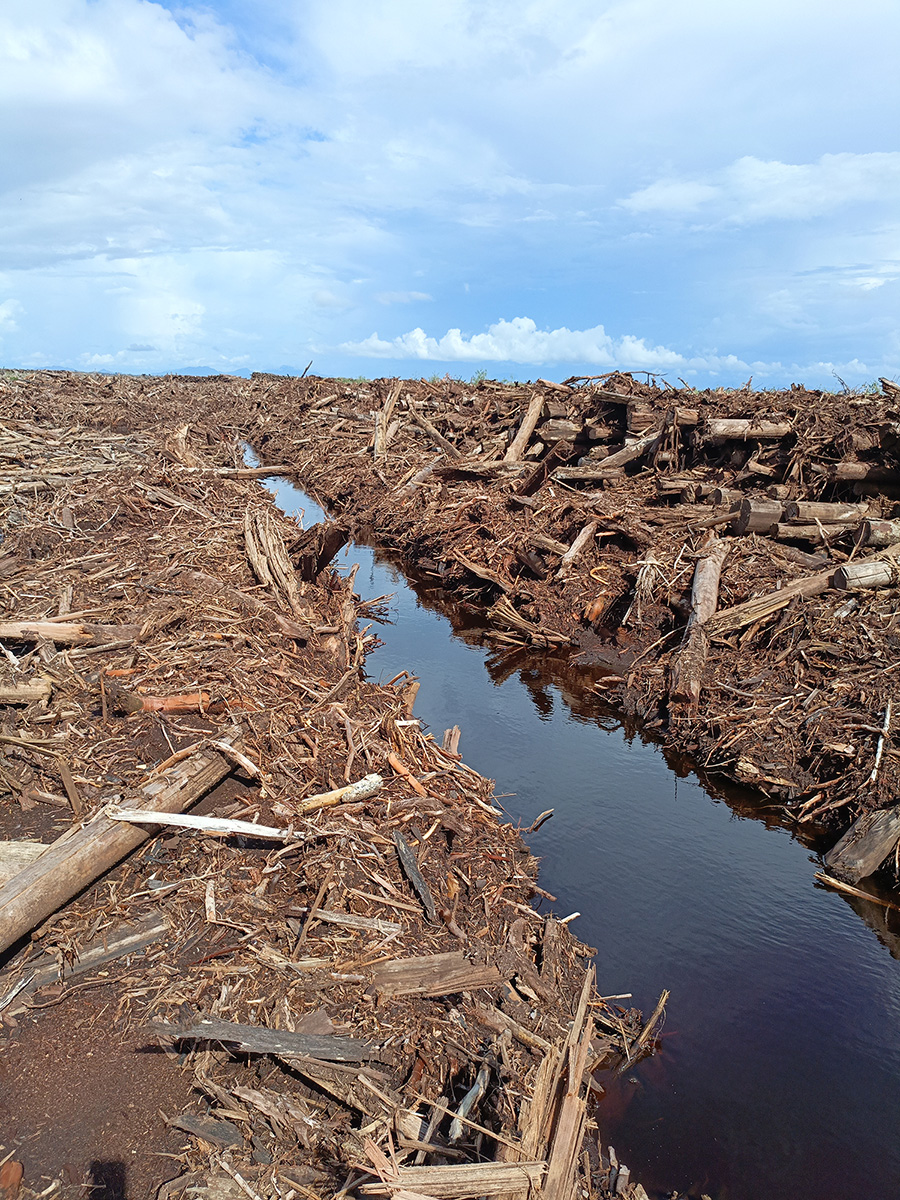Rising Intensity of Forest and Land Fires in September
By AdminDread in Wetland Bed

Almi Ramadhi, Data Analyst at Pantau Gambut explained, “Many rewetting infrastructures such as canal blocks and boreholes are damaged. In some sample observation points, dry peatland was also found because it did not meet the Groundwater Table Height (TMAT) standard of no more than 40 cm.”
Peatland restoration monitoring was conducted in Peat Hydrological Units (PHU) spread across seven provinces, namely Aceh, Riau, Jambi, South Sumatra, West Kalimantan, East Kalimantan, and West Papua. The study locations were differentiated based on two types of locations: 1) concession areas that are the responsibility of the corporation and 2) non-concession areas that are the obligation of the government to carry out peatland restoration.
It was recorded that 95% of the 289 non-concession peat sample points in the government restoration area that had burned areas and tree cover loss (TCL), had been converted into plantations of dry land crops and shrubs. Oil palm is the dominant commodity. Sadly, land conversion to forest is not given much attention as it is only found in 3% of the sample area.
Diagram of Land Cover Proportion in the Government Restoration Area

Much more depressing conditions were found in the concession areas. Only 1% of the 240 sample points of the concession area returned to forest despite having been burned and experiencing tree cover loss. Ironically, this condition occurs in several company areas that often have social conflict problems such as PT Mayawana Persada (MP) in West Kalimantan and PT Bumi Mekar Hijau (BMH) in South Sumatra.
Diagram of Land Cover Proportion in the Corporate Restoration Area

Advocacy and Campaign Manager of Pantau Gambut, Wahyu Perdana said, “The obligation for prevention, fire management and rehabilitation of burned areas is the responsibility of the government and companies, not delegated to the community.” The obligation to restore damaged peatlands back to forest refers to Government Regulation No. 57/2016 jo. PP No. 71/2014 on the Protection and Management of Peat Ecosystems.
All of these findings contradict the Indonesian government's claims of peatland restoration achievement as described in The State of Indonesia's Forest 2024 document, which was just released by the Ministry of Environment and Forestry on July 20, 2024. During President Jokowi's two terms in presidential office, peatland restoration has been a rigorous test of environmental protection. Even so, this does not mean that claims of success are only seen from the numbers of project implementation alone, but also really pay attention to the impact on as many parties as possible.
Wahyu added: "Don't let this claim of success just become an image-making tool for global commitments. The growing gap between restoration policy and the reality of implementing peat ecosystem protection strategies in Indonesia is evident in the contradiction between claims and field results.
Based on the findings of this study, the following recommendations are provided for the government and corporations in managing peatland concession areas:
-
The government must uphold the principle of state responsibility. This obligation ensures that the government cannot neglect or delegate the protection of peatlands solely to the community.
-
The government must take preventive measures as part of law enforcement efforts. Law enforcement actions must be prioritized without waiting for forest and land fires (karhutla) to occur. Any person whose actions pose a serious threat to the environment is held strictly liable for any resulting damage, without the need to prove fault.
-
Corporations must assume absolute responsibility for their concession areas. Corporations bear absolute responsibility for their concession areas and must promptly address any damage to the peatland ecosystem in accordance with established standards. This includes the comprehensive restoration of the ecosystem.
-
Corporations must regularly and transparently validate their sustainability claims. Sustainability claims cannot be solely based on corporate sustainability certifications. Regular and transparent environmental testing is required.
-
Financial institutions must tighten environmental audits. Financial institutions should impose restrictions on companies with a record of peatland ecosystem damage.
Iola Abas, National Coordinator of Pantau Gambut concluded, “A responsibility must be completed by anyone without exception, including how to complete the commitment to restore the peat ecosystem to become sustainable again.”
Note:
You can get documentation photos during the field monitoring through the following link.








